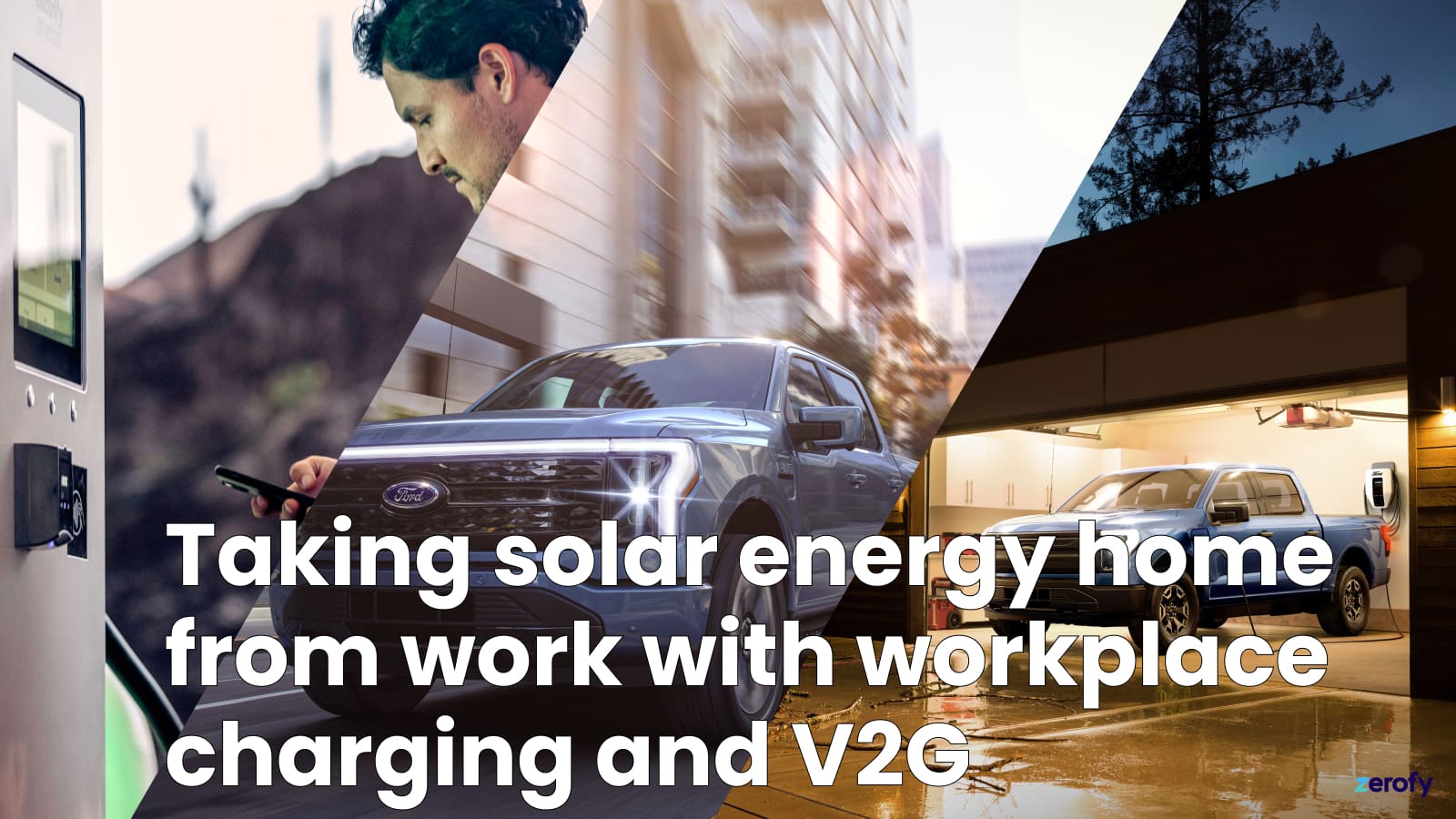How in the Near Future You Could Take Home Solar Energy from Work

Electrification is key for household decarbonization. This includes equipping homes with solar panels, electric cars, and batteries.
The ideal situation is when the car is parked and charged during the day. This way, you can drive with the energy harvested from your own rooftop. And with new technology like Vehicle-to-Grid (V2G), you can also power your home at night from the car’s battery, as an alternative to a dedicated home battery. We have written about V2G using the example of the F-150 Lightning
However, many people use their car to commute and it’s not parked at home during the day, so it can’t charge while solar production is highest. Employers can help here by offering solar charging at work. We have written about that too.
If we combine these two ideas, a new concept arises:
Bringing Solar Energy Home from Work
Imagine a workplace where large solar installations cover warehouses, offices, and parking lots, or even extend to privately owned solar parks. This is something which is already underway, with installations on buildings and with solar carports. Now, picture these workplaces populated with employees driving EVs equipped with V2G technology. This enables a new concept how to transport solar energy in your car’s battery:
- Charge your car at work: Employees plug in their EVs during work hours, harnessing solar energy for charging.
- Drive home with solar power: At the end of the day, these EVs, now charged with solar energy, are driven home.
- Power your home from your car battery with V2G: Once home, the EV connects to the house, transferring solar energy for evening use.
This cycle creates an exciting reality: Not only is your drive powered by solar energy, but your home benefits from it too. You literally drive a battery full of solar energy home from work.
This could also work particularly well for people who can’t have rooftop solar at home.
Additional Advantages
- Reduced Grid Load: By utilizing solar energy in this manner, we can significantly decrease the load on electrical grids during peak hours, reducing the need for extensive grid infrastructure.
- Sustainable Energy Usage: This system promotes an eco-friendly lifestyle, aligning with global efforts to combat climate change.
Potential Challenges
- Battery Lifespan: There’s ongoing research into the effects of frequent charging and discharging cycles on EV batteries, particularly concerning long-term performance and durability.
One interesting question will be the cost and business models: will employers offer this service as a benefit, or at attractive prices? It should also be noted that such a service helps employers reduce some of their scope-3 emissions, even beyond reducing emissions from employee commutes, which may open additional cost models for the electricity produced and consumed.
Adding Energy Communities
An exciting extension of this concept lies in the formation of energy communities. An energy community allows sharing solar power not only within a (multi-family) house, but also with your neighboring buildings or even larger geographic areas like a village or even larger. (The regulation has been in place in the EU for a couple of years, and a similar regulation for Switzerland was just passed this year.) Using energy communities, employers and employees could collaborate to form a collective, pooling their solar resources. This community-driven approach could leverage solar energy from various sources, including employee homes and employer facilities, and use it to charge chars at the workplace during the day as described above.
Conclusion
This shows how combining technologies like V2G, solar power, and electric cars can create something really special. Together, they do more than each part could alone, offering solutions we’ve never seen before.
Lastly, if you’re enthusiastic about this sustainable future and have already embraced rooftop solar or an electric vehicle, our energy management app, Zerofy, might be the perfect tool for you. It’s designed to optimize your solar utilization and smart charging today, with the potential to incorporate Vehicle-to-Grid (V2G) technology in the future.